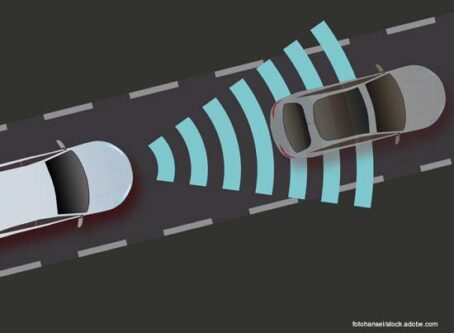FMCSA notices on automation, AEBs slated for spring
By this spring, the Federal Motor Carrier Safety Administration is expected to publish notices about automated driving systems and automatic emergency braking systems.
The U.S. Department of Transportation’s February 2024 Significant Rulemaking Report outlines several FMCSA rulemakings, including efforts to regulate automated trucks and to mandate emergency braking technology.
Automated driving systems
FMCSA is expected to publish a notice of proposed rulemaking in March involving automated vehicles. The proposal is aimed at creating a regulatory framework for the safe integration of commercial motor vehicles equipped with automated driving systems.
“The proposed changes to the commercial motor vehicle operations, inspection, repair and maintenance regulations prioritize safety and security, promote innovation, foster a consistent regulatory approach to ADS-equipped commercial motor vehicles and recognize the difference between human operators and ADS,” the agency wrote.
FMCSA’s forthcoming proposal follows its supplemental advance notice released last year. In that notice, the agency asked industry stakeholders to answer questions regarding the deployment of autonomous technology.
The Owner-Operator Independent Driver Association, which represents small-business truckers, told FMCSA not to overlook the failures of automated technology.
“While autonomous vehicles might improve safety under certain conditions, they create new risks with dangerous outcomes,” OOIDA wrote in comments to the agency.
Automatic emergency brakes
In April, FMCSA is projected to unveil a final rule that would require automatic emergency braking systems on most new commercial motor vehicles.
Last year, FMCSA and the National Highway Traffic Safety Administration issued a joint proposal that would require AEB systems and electronic stability control systems on new vehicles weighing more than 10,000 pounds.
The heavy vehicle proposal calls for all Class 7 and 8 vehicles – those weighing more than 26,000 pounds – to be required to meet the AEB standards three years after the rule takes effect. All Class 3 to 6 vehicles – those weighing 10,001 to 26,000 pounds – would be required to meet the AEB and electronic stability control requirements in four years. Small-volume manufacturers would have until five years after the final rule took effect. There would not be any retrofit requirements on existing heavy vehicles.
OOIDA opposes any attempts to mandate AEBs until the technology has been perfected. False activations remain a common criticism.
“The notice of proposed rulemaking mandates AEB systems without sufficiently addressing false activations, properly consulting with professional truck drivers or completing ongoing research programs,” OOIDA wrote.
Other rulemakings
Other noteworthy findings from the February report include a forthcoming proposal to mandate speed limiters, as well as the absence of a proposal to improve broker transparency.
FMCSA plans to publish a supplemental notice of proposed rulemaking in May to mandate speed-limiting devices on most commercial motor vehicles. At that time, FMCSA is expected to unveil its proposed top speed. Safety groups and industry stakeholders have asked for as slow as 60 mph and as fast as 70 mph or more. OOIDA is opposed to a mandate at any speed.
The Significant Rulemakings Report did not include an entry on broker transparency. However, FMCSA confirmed with Land Line earlier this week that the rulemaking still is projected to be released in October.
“FMCSA remains committed to initiating a rulemaking in 2024 concerning broker transparency,” said Cicely Waters, FMCSA’s communication director.
The omission was only because the rulemaking didn’t meet the regulatory standard of being “economically significant,” which is defined as having an annual effect on the economy of $100 million or more. LL









